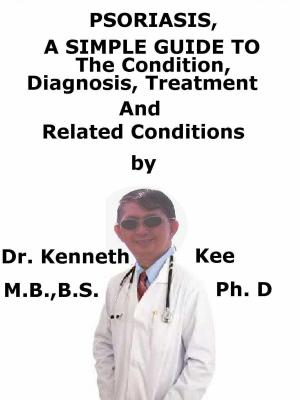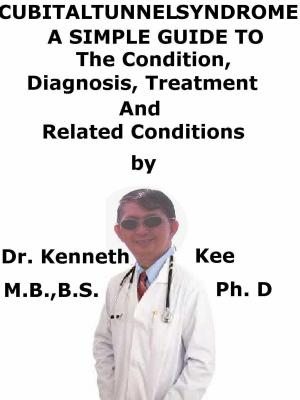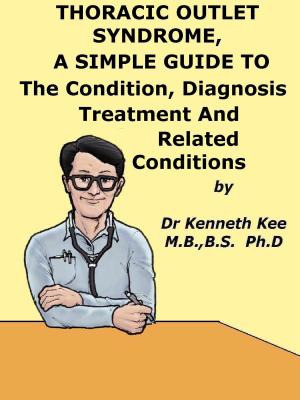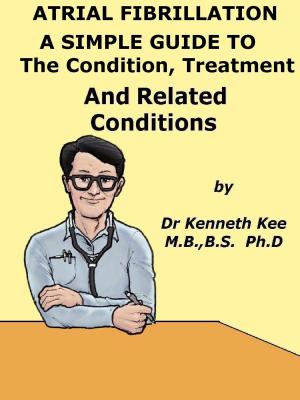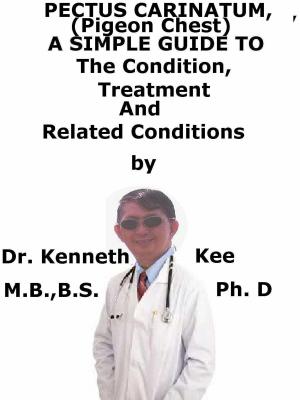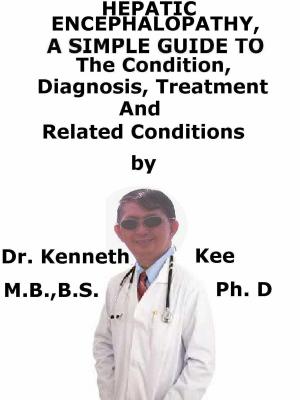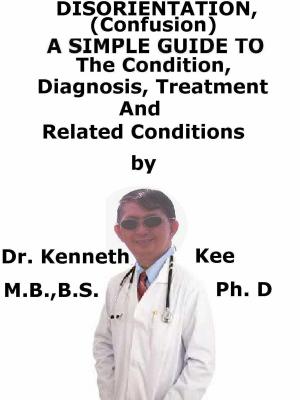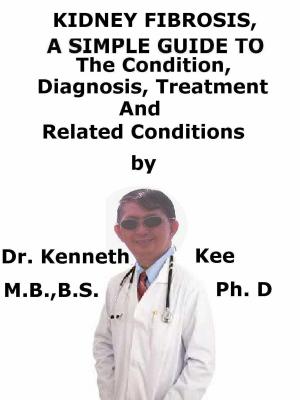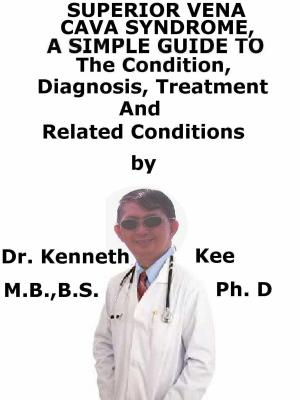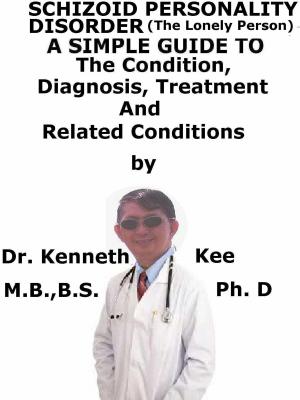Intercostal Neuralgia, A Simple Guide To The Condition, Diagnosis, Treatment And Related Conditions
Nonfiction, Health & Well Being, Health, Ailments & Diseases, Nervous System & the Brain, Medical, Specialties, Internal Medicine, Neurology| Author: | Kenneth Kee | ISBN: | 9781370137923 |
| Publisher: | Kenneth Kee | Publication: | October 20, 2016 |
| Imprint: | Smashwords Edition | Language: | English |
| Author: | Kenneth Kee |
| ISBN: | 9781370137923 |
| Publisher: | Kenneth Kee |
| Publication: | October 20, 2016 |
| Imprint: | Smashwords Edition |
| Language: | English |
Intercostal Neuralgia is a medical symptom which is caused by the compression of nerve in thoracic or the abdominal area (i.e., the ribcage).
This neuralgia is not a common disease where there is pain along the intercostal nerves.
These nerves run between the ribs and any form of injury to one of the nerves or any impairment of the function of nerve causes intercostal neuralgia.
There may be many causes for compression of this nerve like:
1. A ruptured abdominal tissue,
2. Abdominal distention,
3. Scar tissue formation around nerve,
4. Abdominal muscle overuse,
5. Irregular curvature of vertebrae
6. Surgical wounds between the ribs in and around the chest region can also be one of the causes in which this nerve can be injured.
These nerves can get damaged or inflamed due to different diseases or conditions leading to intercostal neuralgia.
The most frequent causes for intercostal neuralgia are:
1. Pregnancy, where the abdominal cavity enlarges and presses upwards against the chest ribs and muscles
2. Tumor, on the rib, inside the chest cavity or muscles can affect the nerves in the chest
3. Chest or rib injury, the nerves are compressed as a result of the chest injury
4. Injury to chest or organs in the chest cavity, have the effect of injuring the nerves in the chest
5. Infections such as shingles usually a single nerve and its branches that run along the intercostal groove or the skin above the nerve
Intercostal neuralgia is typically preventable and can be treated easily
The main symptom of intercostal neuralgia is pain in the intercostal (between ribs) area.
This pain can be bilateral, stabbing, sharp, tearing, or aching in nature.
The pain is present in and around the chest area on either side and may spread from the back towards the front of chest in a band-like fashion.
Pain is felt evenly sometimes along the length of ribs.
There is pain sometimes with breathing, laughing, or sneezing.
Intercostal neuralgia can also resolve by itself but normally requires treatment.
1. In patients where intercostal pain is frequently recurring, the particular part of the nerve causing pain requires to be destroyed.
2. NSAIDs assist in calming down pain and reducing inflammation.
3. Medications like neuropathic pain medications and capsaicin cream assist in relief of pain.
4. A TENS (Transcutaneous Electrical Nerve Stimulation) pain relieving unit also assists to relieve pain.
5. Epidural injections and sleeve injection of nerve root are also given.
6. Pulse Radiofrequency treatment is also used sometimes.
7. Intercostal nerve blocks with corticosteroid or local anesthetic may be given around the involved intercostal nerve.
8. Antidepressant medications assist in calming down nerve pain.
TABLE OF CONTENT
Introduction
Chapter 1 Intercostal Neuralgia
Chapter 2 Causes
Chapter 3 Symptoms
Chapter 4 Diagnosis
Chapter 5 Treatment
Chapter 6 Prognosis
Chapter 7 Trigeminal Neuralgia
Chapter 8 Shingles
Epilogue
Intercostal Neuralgia is a medical symptom which is caused by the compression of nerve in thoracic or the abdominal area (i.e., the ribcage).
This neuralgia is not a common disease where there is pain along the intercostal nerves.
These nerves run between the ribs and any form of injury to one of the nerves or any impairment of the function of nerve causes intercostal neuralgia.
There may be many causes for compression of this nerve like:
1. A ruptured abdominal tissue,
2. Abdominal distention,
3. Scar tissue formation around nerve,
4. Abdominal muscle overuse,
5. Irregular curvature of vertebrae
6. Surgical wounds between the ribs in and around the chest region can also be one of the causes in which this nerve can be injured.
These nerves can get damaged or inflamed due to different diseases or conditions leading to intercostal neuralgia.
The most frequent causes for intercostal neuralgia are:
1. Pregnancy, where the abdominal cavity enlarges and presses upwards against the chest ribs and muscles
2. Tumor, on the rib, inside the chest cavity or muscles can affect the nerves in the chest
3. Chest or rib injury, the nerves are compressed as a result of the chest injury
4. Injury to chest or organs in the chest cavity, have the effect of injuring the nerves in the chest
5. Infections such as shingles usually a single nerve and its branches that run along the intercostal groove or the skin above the nerve
Intercostal neuralgia is typically preventable and can be treated easily
The main symptom of intercostal neuralgia is pain in the intercostal (between ribs) area.
This pain can be bilateral, stabbing, sharp, tearing, or aching in nature.
The pain is present in and around the chest area on either side and may spread from the back towards the front of chest in a band-like fashion.
Pain is felt evenly sometimes along the length of ribs.
There is pain sometimes with breathing, laughing, or sneezing.
Intercostal neuralgia can also resolve by itself but normally requires treatment.
1. In patients where intercostal pain is frequently recurring, the particular part of the nerve causing pain requires to be destroyed.
2. NSAIDs assist in calming down pain and reducing inflammation.
3. Medications like neuropathic pain medications and capsaicin cream assist in relief of pain.
4. A TENS (Transcutaneous Electrical Nerve Stimulation) pain relieving unit also assists to relieve pain.
5. Epidural injections and sleeve injection of nerve root are also given.
6. Pulse Radiofrequency treatment is also used sometimes.
7. Intercostal nerve blocks with corticosteroid or local anesthetic may be given around the involved intercostal nerve.
8. Antidepressant medications assist in calming down nerve pain.
TABLE OF CONTENT
Introduction
Chapter 1 Intercostal Neuralgia
Chapter 2 Causes
Chapter 3 Symptoms
Chapter 4 Diagnosis
Chapter 5 Treatment
Chapter 6 Prognosis
Chapter 7 Trigeminal Neuralgia
Chapter 8 Shingles
Epilogue

